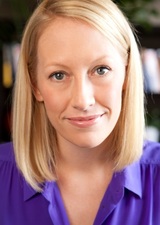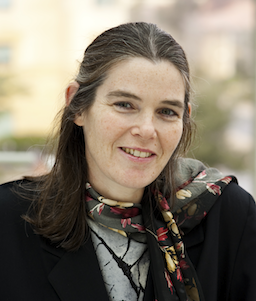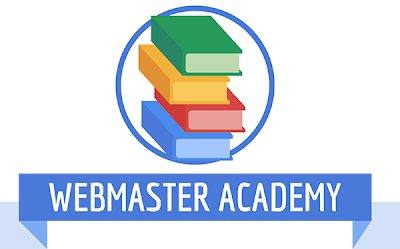Translate
Monday, 31 March 2014
Saturday, 29 March 2014
Lesson Plans and Resources for Arts Integration | Edutopia
Dance in science, pop art in Spanish, or photography in maths -- there’s no end to the ways arts can be integrated into other curricula. Educators from Bates Middle School, in Annapolis, Maryland, share arts-integrated lessons and resources that you can use in your school.
BY DOUG KEELY
Grab all these shareable jewels in :Lesson Plans and Resources for Arts Integration | Edutopia
'via Blog this'
Friday, 28 March 2014
Virgin StartUp Entrepreneur: Sophie Frost, Yucoco
Discover how http://www.virginstartup.org. - helped Sophie Frost start her chocolate business with access to support, mentoring and government back Start Up Loans.
Category
Licence
Standard YouTube Licence
Thursday, 27 March 2014
Wednesday, 26 March 2014
2014's Social Video Starter Guide to YouTube, Vimeo, Google Hangouts Vine and Instagram - infographic ~ Digital Information World
2014's Social Video Starter Guide to YouTube, Vimeo, Google Hangouts Vine and Instagram - infographic ~ Digital Information World:
"Video content is a major component of digital marketing. Presently, each month YouTube gets more than 1,000,000,000 visits. While, it's predicted that by 2017 video traffic will be 67 percent of all consumer web traffic! So, if your startup company hasn't ventured into the video marketing channel, now is definitely the time to get started.
Here's an infographic created by our pals at smarttollfreenumber takes a closer look at 5 best social platforms to get started on."

'via Blog this'
"Video content is a major component of digital marketing. Presently, each month YouTube gets more than 1,000,000,000 visits. While, it's predicted that by 2017 video traffic will be 67 percent of all consumer web traffic! So, if your startup company hasn't ventured into the video marketing channel, now is definitely the time to get started.
Here's an infographic created by our pals at smarttollfreenumber takes a closer look at 5 best social platforms to get started on."

'via Blog this'
Monday, 24 March 2014
Creative coding MOOC - FutureLearn and Monash University
FutureLearn MOOCs
https://www.futurelearn.com/courses/creative-coding

https://www.futurelearn.com/courses/creative-coding

Creative coding
This course introduces computer programming as a creative discipline to generate sounds, images, animation and more.
WATCH THE TRAILER
ABOUT THE COURSE
(Image © 2010 Jon McCormack)
Learning to program is no longer just for computer specialists and software developers. People from many different backgrounds now want to understand the basics of programming, because it’s both fun and an increasingly valuable skill. One of the most exciting ways to learn programming is through authoring your own creative programs. Known as “creative coding”, this growing field uses computer software as a medium to develop original creative expression. So if you’re an artist, designer, architect or musician who’s interested in how you can expand your creative skills, or even a computer programmer looking to work in creative applications, you will find this course extremely useful.
Throughout the course we’ll help you develop practical programming concepts and skills by exploring creative ideas and challenges. We’ll be looking at the history and philosophy behind artistic uses of technology, so you can gain a greater understanding of how best to express your own creative vision using the software you write. The aim is to teach you “algorithmic thinking” – ways to conceptualise and model the world so you can express creative ideas using computer programs. A background in programming is not assumed or necessary.
Each week we will start with a simple creative idea and guide you through turning that idea into a working computer program. We’ll be exploring programs that can generate images, animations and sound and you’ll learn how you can interact with them to change their behaviour. As you’ll discover, this opens a world of possibilities, because as you expand and modify your program new creative possibilities emerge. Starting with simple processes we will look at how to create increasingly complex and nuanced visual and sonic artworks using generative programming techniques. Assignments will give you the opportunity to explore your own creative ideas and share your achievements with fellow students.
We will also look at how a number of leading professional artists and designers work creatively with computers, technology and robotics, examining their creative process and the ideas that inspire them.
The course is very different from technical courses on programming. We will place creative programming in context through discussion about some of the most interesting questions raised by computer-generated art, such as:
- Can a computer be independently creative?
- Who is the author of a work of computer art: the programmer or the program?
- How is our understanding of art and creativity changed by technology?
- Does the computer bring anything that is really new to art?
If you’ve ever wondered about these questions or wanted to learn how to program a computer for creative purposes, then this course is for you.
- Starts on
- Duration: 6 weeks
- 3 hours pw
Thursday, 20 March 2014
Google Science Fair

Google Science Fair
This coming Field Trip Friday, join a Galactic Hangout to learn: How do we get to space?http://goo.gl/Ylk1m4
Why do we joke about how difficult rocket science is? Because it really is hard getting to space! How do satellites and astronauts make it into space safely? What are the key technologies and systems that have been used over the years? What will be different about the missions of the first commercial spaceline?
Come meet three amazing people from the Virgin Galactic team. You’ll hear about Michael ‘’Sooch’’ Masucci’s exploits test-piloting SpaceShipTwo; Kimberly Betker’s work in the liquid propulsion team (how cool is that?); and Kyle Stephens will tell you what a Payload Integration Engineer does.
Sign up to attend, post your questions using the Q&A app, then come hear your questions answered live! http://goo.gl/Ylk1m4
“Field Trip Friday,” March 21, 10AM PT / 1PM ET / 1700 GMT
Why do we joke about how difficult rocket science is? Because it really is hard getting to space! How do satellites and astronauts make it into space safely? What are the key technologies and systems that have been used over the years? What will be different about the missions of the first commercial spaceline?
Come meet three amazing people from the Virgin Galactic team. You’ll hear about Michael ‘’Sooch’’ Masucci’s exploits test-piloting SpaceShipTwo; Kimberly Betker’s work in the liquid propulsion team (how cool is that?); and Kyle Stephens will tell you what a Payload Integration Engineer does.
Sign up to attend, post your questions using the Q&A app, then come hear your questions answered live! http://goo.gl/Ylk1m4
“Field Trip Friday,” March 21, 10AM PT / 1PM ET / 1700 GMT
Wednesday, 19 March 2014
National Poetry Month: Poetry and Technology | Edutopia
National Poetry Month: Poetry and Technology | Edutopia
'via Blog this'
Learn how to illustrate, enhance, & share poems with these 4 easy-to-use web tools: http://bit.ly/1hxS13X.
'via Blog this'
Tuesday, 18 March 2014
Monday, 17 March 2014
Friday, 14 March 2014
Moodle

Moodle originally shared:
All videos on Moodle's Youtube channel are CC-licensed (because we're all about open learning and sharing ideas)! So please feel free to use and share them widely, and please attribute them to us :)
http://www.youtube.com/moodlehqThursday, 13 March 2014
Story of the web #web25

The World Wide Web has gone from “never heard of it” to “can’t live without it” in 25 years. It took off because of its instant user appeal, but also because it’s open and free. From HTML to hacktivism, the W3C to MP3s, lolcats to LulzSec, from one website to over 180 million, here are its defining moments.
CLICK HERE OR IN THE IMAGE ABOVE (I love this :)) TO GO TO LINK
'via Blog this'
Tuesday, 11 March 2014
Stanford bioengineer develops a 50-cent paper microscope | Scope Blog
In Stanford Medicine Scope Blog
When Manu Prakash, PhD, wants to impress lab visitors with the durability of his Origami-based paper microscope, he throws it off a three-story balcony, stomps on it with his foot and dunks it into a water-filled beaker. Miraculously, it still works.
The Foldscope is a fully functional microscope that can be laser- or die-cut out of paper for around 50 cents.
When Manu Prakash, PhD, wants to impress lab visitors with the durability of his Origami-based paper microscope, he throws it off a three-story balcony, stomps on it with his foot and dunks it into a water-filled beaker. Miraculously, it still works.
Even more amazing is that this microscope — a bookmark-sized piece of layered cardstock with a micro-lens — only costs about 50 cents in materials to make.
In the video below, you can see his “Foldscope” being built in just a few minutes, then used to project giant images of plant tissue on the wall of a dark room.
Prakash’s dream is that this ultra-low-cost microscope will someday be distributed widely to detect dangerous blood-borne diseases like malaria, African sleeping sickness, schistosomiasis and Chagas.
This bookmark-sized microscope can be assembled in minutes, includes no mechanical moving parts, packs in a flat configuration, is extremely rugged and can be incinerated after to safely dispose of infectious biological samples. With minor optics modifications, the microscope can be designed for brightfield, multi-flourescence or projection microscopy, or specialized to identify specific pathogens.
More information: http://stan.md/1dIp5qY,http://www.stanford.edu/~manup/
More information: http://stan.md/1dIp5qY,http://www.stanford.edu/~manup/
Category
Licence
Standard YouTube Licence
Magnificent Monday: A Motley of Social Posters for Lifelong Learners
Saturday, 8 March 2014
Celebrating Women Entrepreneurship With Julia Hartz and Daphne Koller | Heather Hummel
"This post is coauthored with Charu Sharma (@charu1603), startup entrepreneur and author of a forthcoming book on women entrepreneurship.
In light of Women's Day (March 8,2014), we chatted with Julia Hartz of Eventbriteand Daphne Koller of Coursera, two of today's leading women entrepreneurs who kindly shared their wisdom, trials, and triumphs with us."


-Photo Courtesy of Eventbrite - Photo Credit: Hector Garcia-Molina
Read all in
http://www.huffingtonpost.com/heather-hummel/celebrating-women-entrepr_b_4913735.html
'via Blog this'
Friday, 7 March 2014
Revisiting if Educational Technology Is Worth the Hype | Edutopia

Edutopia blogger Bob Lenz asks his students how they view the use of technology in education.
Photo credit: Veer

Bob Lenz CEO and Co-Founder, Envision Schools, San Francisco, CA
Each January, I have the opportunity to facilitate a course in Leading and Managing Technology for the Educational Leadership Program at the Kalmanovitz School of Education at Saint Mary's College of California. We organize our learning by exploring the question, "Is educational technology worth the hype?" Together we read Michael Fullens' book Stratosphere, interview school leaders, explore educational technology tools and follow and comment on education blogs.
Complete article in http://www.edutopia.org/blog/educational-tech-worth-hype-revisited-bob-lenz?utm_source=facebook&utm_medium=post&utm_campaign=blog-ed-tech-worth-hype-link
Thursday, 6 March 2014
Edutopia: Five-Minute Film Festival: Teaching Digital Citizenship
Five-Minute Film Festival: Teaching Digital Citizenship
"Digital citizenship" is an umbrella term that covers a whole host of important issues. Broadly, it's the guidelines for responsible, appropriate behavior when one is using technology. But specifically, it can cover anything from "netiquette" to cyberbullying; technology access and the digital divide; online safety and privacy; copyright, plagiarism, and digital law, and more. In fact, some programs that teach digital citizenship have outlined no less than nine elements that intersect to inform a well-equipped digital citizen. It's an overwhelming array of skills to be taught and topics to explore.
But while there is much talk about the importance of teaching digital citizenship in this information society, not many are sure what that really looks like. What tools are out there for teaching it? And how in the world can teachers make time in an already overcrowded curriculum? This playlist is intended to offer tools to make the case that it's critical to teach this, and then launchpad videos to seed classroom discussions once you've carved out that precious time.
Click here

'via Blog this'
The Future of Search: Search IS The Future - YouMoz - Moz
in The YouMoz Blog


'via Blog this'

The Future of Search: Search IS The Future
- Posted by Hortense Soulier to Search Engine Trends
As the release of several major search algorithm updates has marked the world of digital marketing there has been growing interest for the evolution of search capabilities and their impact on search engine optimization and search marketing in general. From “basic” keyword recognition to natural language processing, search engines have made huge leaps in their ability to understand both online content and what users want and look for. I believe that understanding where search is going is fundamental if you are going to stay ahead of it.

'via Blog this'
Wednesday, 5 March 2014
Edutopia: Social Media can be a teacher's best friend
Social Media can be a teacher’s best friend. Download this school-friendly guidebook to get started: http://bit.ly/1crtn84.
Thanks for the image, Educational Technology!
Thanks for the image, Educational Technology!
Secret History of Silicon Valley
Today, Silicon Valley is known around the world as a fount of technology innovation and development fueled by private venture capital and peopled by fabled entrepreneurs. But it wasn't always so. Unbeknownst to even seasoned inhabitants, today's Silicon Valley had its start in government secrecy and wartime urgency.
In this lecture, renowned serial entrepreneur Steve Blank presents how the roots of Silicon Valley sprang not from the later development of the silicon semiconductor but instead from the earlier technology duel over the skies of Germany and secret efforts around (and over) the Soviet Union. World War II, the Cold War and one Stanford professor set the stage for the creation and explosive growth of entrepreneurship in Silicon Valley. The world was forever changed when the Defense Department, CIA and the National Security Agency acted like today's venture capitalists funding this first wave of entrepreneurship. Steve Blank shows how these groundbreaking early advances lead up to the high-octane, venture capital fueled Silicon Valley we know today.
In this lecture, renowned serial entrepreneur Steve Blank presents how the roots of Silicon Valley sprang not from the later development of the silicon semiconductor but instead from the earlier technology duel over the skies of Germany and secret efforts around (and over) the Soviet Union. World War II, the Cold War and one Stanford professor set the stage for the creation and explosive growth of entrepreneurship in Silicon Valley. The world was forever changed when the Defense Department, CIA and the National Security Agency acted like today's venture capitalists funding this first wave of entrepreneurship. Steve Blank shows how these groundbreaking early advances lead up to the high-octane, venture capital fueled Silicon Valley we know today.
Category
Licence
Standard YouTube Licence
Saturday, 1 March 2014
Subscribe to:
Comments (Atom)




















![Social Media can be a teacher’s best friend. Download this school-friendly guidebook to get started: http://bit.ly/1crtn84.
Thanks for the image, @[202077286473233:274:Educational Technology]!](https://fbcdn-sphotos-e-a.akamaihd.net/hphotos-ak-frc1/t1/s526x296/1959918_10152278289269917_1255461552_n.jpg)